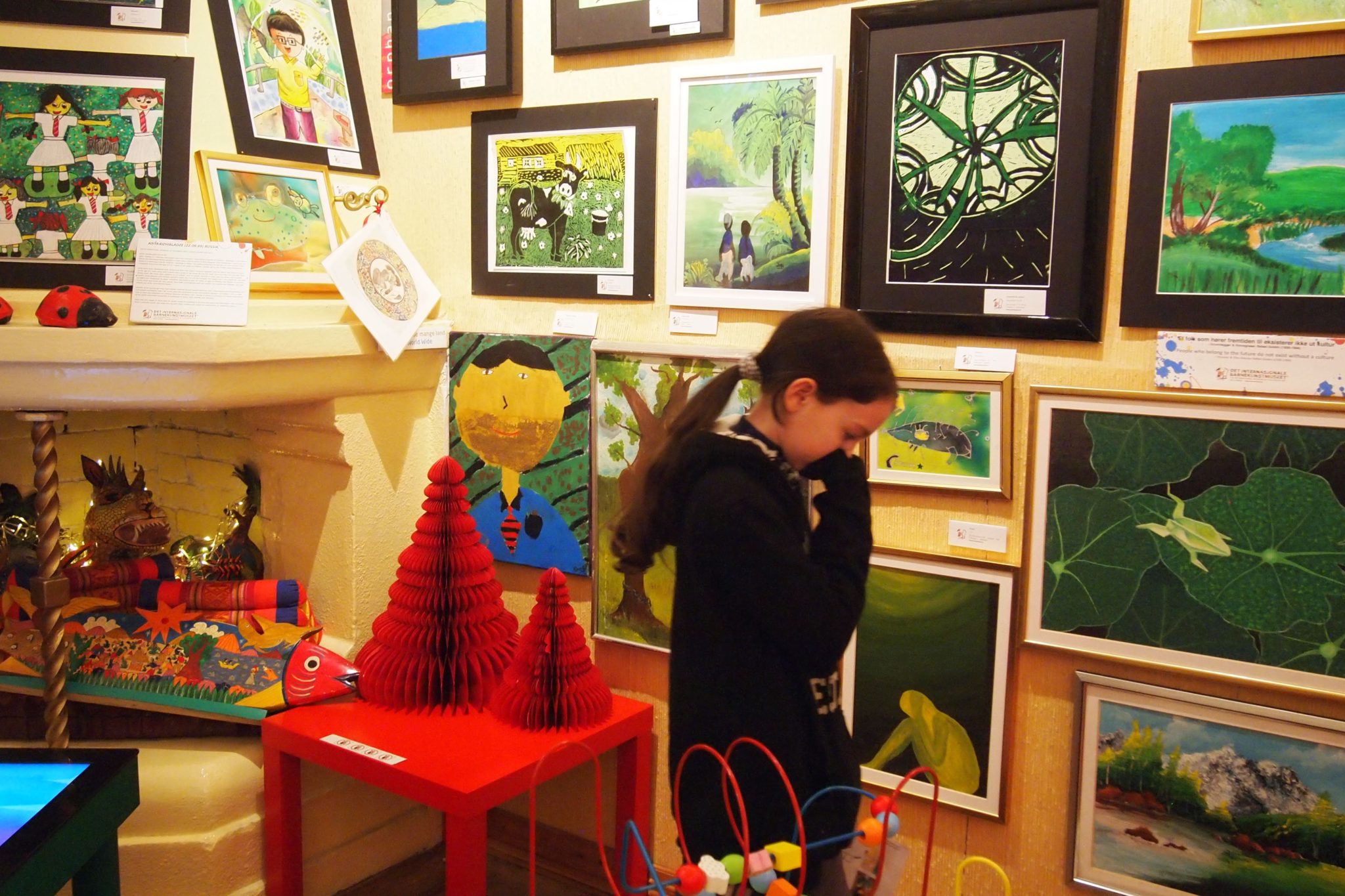If I was traveling with anyone else, I probably would not have gone there. But since my companion was a 10-year-old who asked for “chances to make art” for her special trip to Norway, the International Children’s Art Museum (Det Internasjonale Barnekunstmuseet) in Oslo was the first stop on our itinerary. I’m not going to lie. I didn’t expect much. People always underestimate kids.
The International Children’s Art Museum
Nearly every city has a children’s museum these days, and sometimes art museums have sections or special exhibits for children. But as far as I know, the International Children’s Art Museum in Oslo is the only art museum in the world dedicated entirely to children. Even if it is not, this museum is still unique because it’s not just showing art to children, it’s showing art by children.
Established in 1986 by film director Rafael Goldin and his wife, Dr. Alla Goldin, the museum (colloquially known as Barnekunst) collects, preserves, and displays art by children. They have a massive collection of art from over 180 countries. Only a small fraction of it is on display at any given time in the museum, a large converted house in a quiet suburban neighborhood of Oslo that houses the embassies of many small nations.
The Museum Experience
Nearly every inch of the big, old house is covered in art. Some of it is original works on small, framed pieces of paper. Some of the pieces have been blown up and printed on giant posters for better viewing. One small room houses sculptures while other rooms are dedicated to rotating themed exhibitions and displays from the permanent collection. The top floor straddles the line between wonderland and creepy, with red walls and a huge collection of dolls from around the world. The basement houses a gift shop and work room where children can create their own art and participate in regularly held weekend workshops.
Barnekunst was our first stop in Oslo after picking up our Bergen Cards at the tourist information center. We arrived in the late morning of an April Tuesday, just as some others were leaving. Aside from the woman working the front desk, they were the only other people we saw during our visit. You could easily view the entire museum in half an hour, but to really take it all in, you have move slowly. We ended up staying nearly three hours.
We left our shoes in the cubbies by the door and explored the museum in our socks. The friendly staff person at the front desk gave us a worksheet with a scavenger hunt of images from the museum – if you found them all, you could get a prize. Starting from the basement, we worked our way slowly through rooms, ending in the uncanny doll room. Along the way, we found a few of the scavenger hunt items and marveled in awe at the skill of some young artists.
Then we worked our bay back down, looking more closely for the ones we missed. Several of the images on the worksheet were close-up details of larger works and gave us a real challenge. We had to get hints from the lady at the desk to find the last two.
Inspired, my daughter spent nearly an hour at the end of our visit drawing a picture in the work room. She drew a portrait of a gender-fluid child. Since I hadn’t noticed gender as a theme in the museum, I asked her what inspired the choice. She said she couldn’t decide whether to draw a girl or a boy, then realized it didn’t have to be one or the other. Again, I was reminded that youth is not the same as ignorance.
The Art
On our first pass through the museum, we were mostly struck by the talented kids. We marveled at the technical skill and maturity of some of the drawings relative to the age of the artist. My daughter’s ego took a few hits as she repeatedly commented, “That person is my age,” or “That was done by someone younger than me.”

But as we went back through more slowly, I began to pay more attention to the way the work was grouped. Not all of it was technically superior. Some 13-year-olds’ pictures looked like first grade scribbles, and after a while, you even began to see that overall, a certain level of skill and detail generally matched up with age.
But you also began to notice the way geography tended to influence style. Children from South Asia and Africa tended to use brighter colors, art in a cartoon style was more likely to be from East Asia. Regardless of technique or style, the pictures often revealed the inner workings of the artist’s mind. Whether it was a stick figure that somehow captured the anguish of getting lost or an impressionistic painting of a father’s yelling face, these images had just as much emotional weight as the work hanging in other museums.
The Impact
Sometimes the choice of subject matter revealed that childhood is not the uniformly naïve and unburdened experience adults like to imagine. Among the robots and superheroes and spaceships were also pictures of farm work, hunting for food or hauling water, and anxiety for the future. Individual works were sometimes very compelling, and sometimes Regardless of whether an individual works was compelling of itself or became so through the careful curation and context of museum display, the end result was as effective as any exhibition of professional works. Perhaps it was even more so for being so unexpected.
When we were done, my daughter got to pick a prize. She chose a postcard of one of the paintings that I had liked. It sits on my desk now as a reminder that anyone can make good art.




About the author